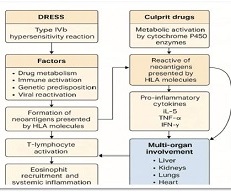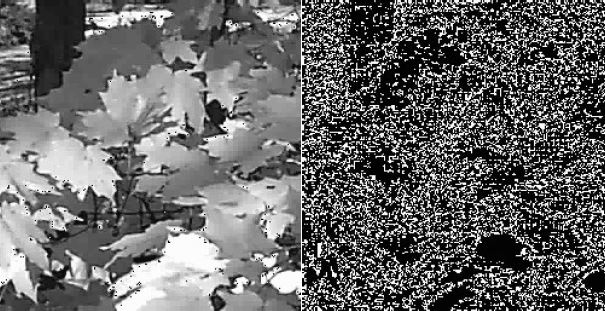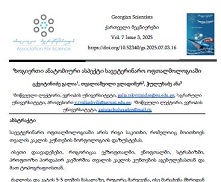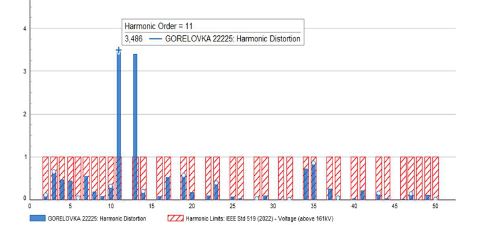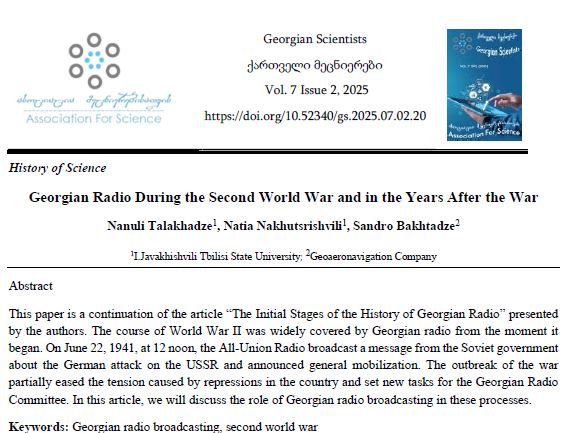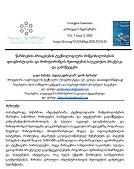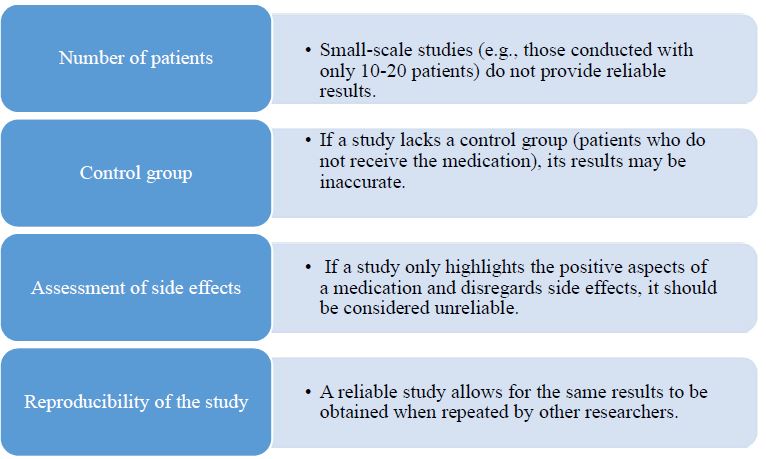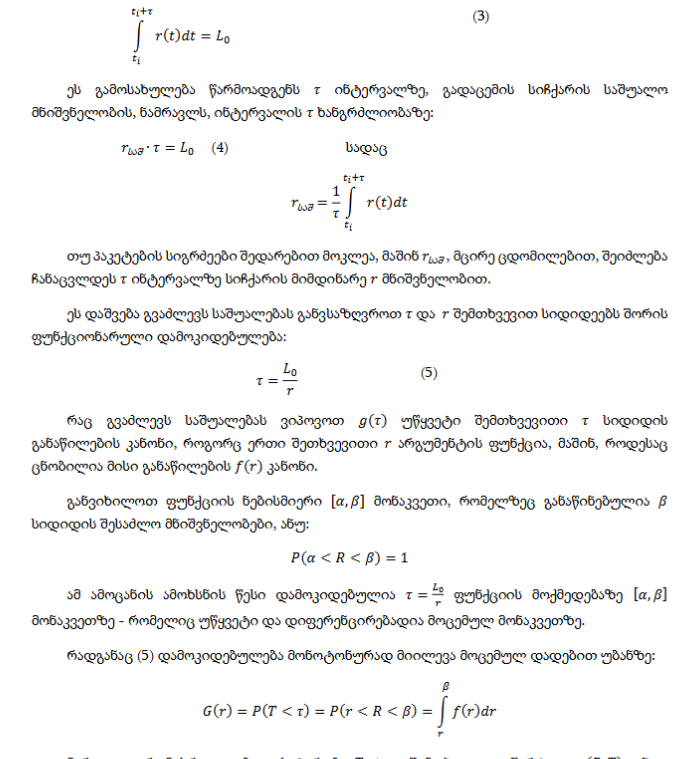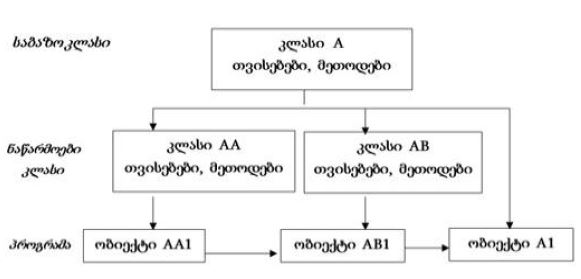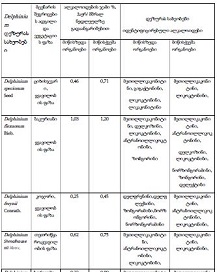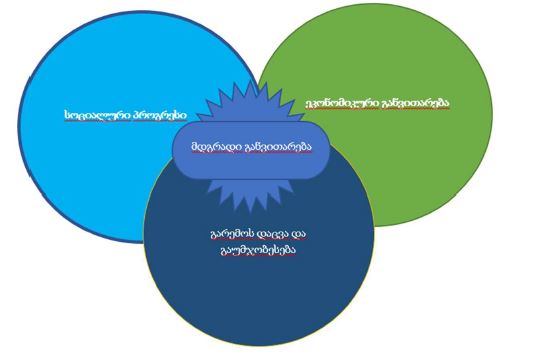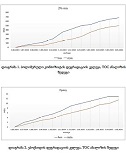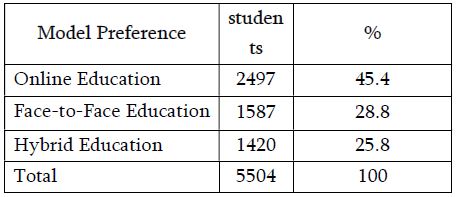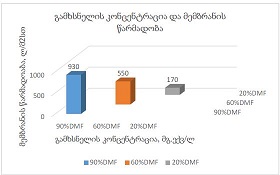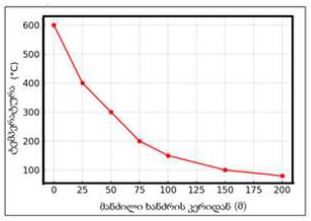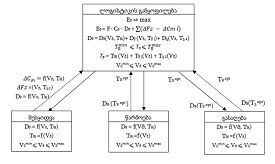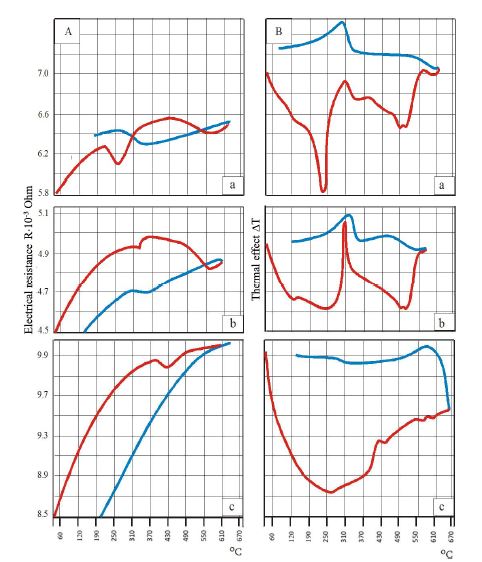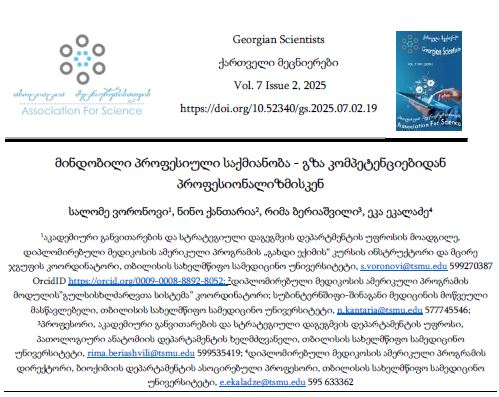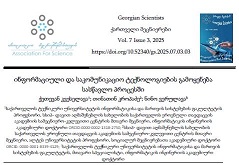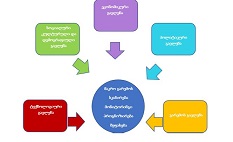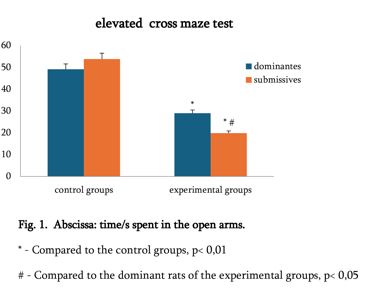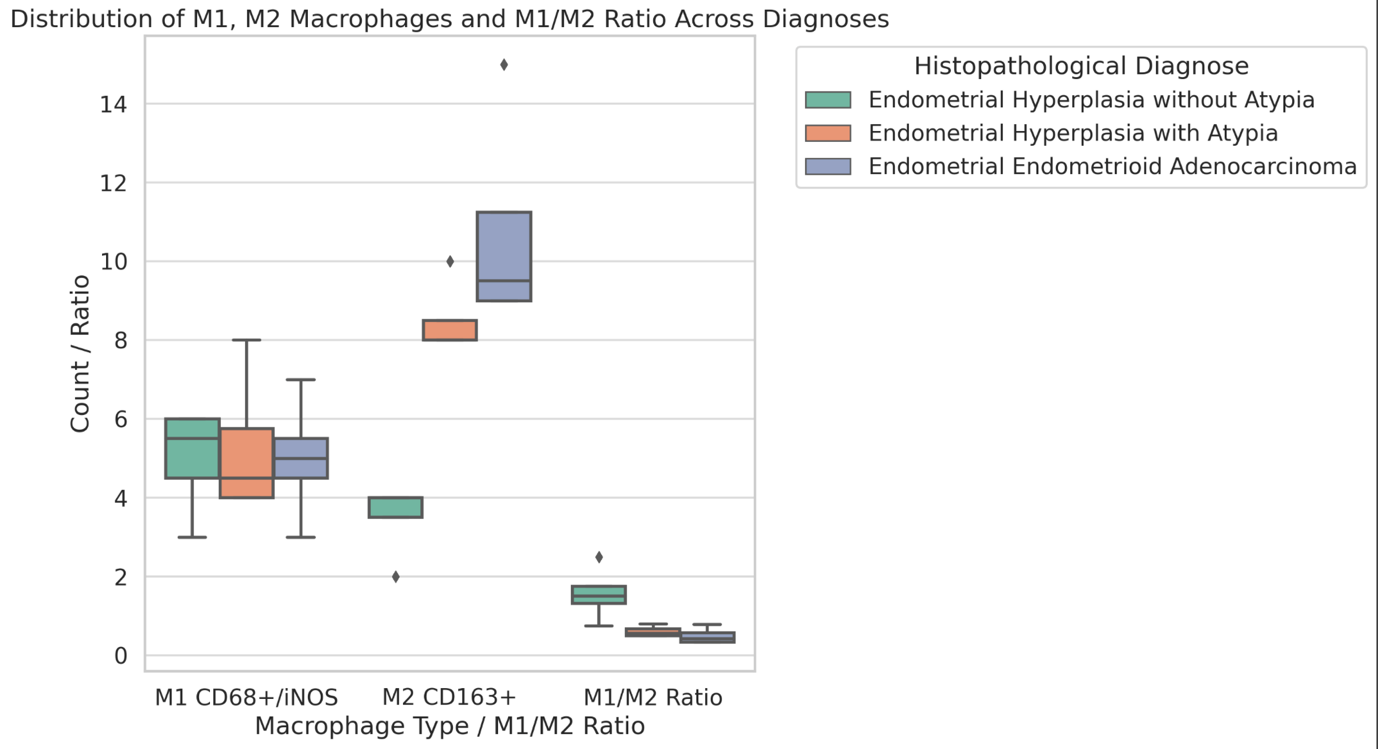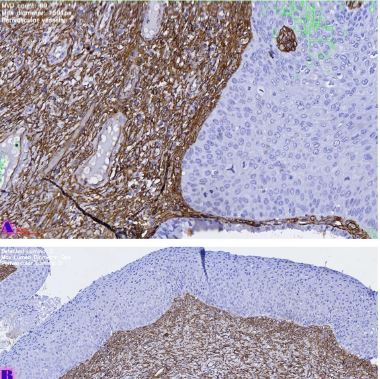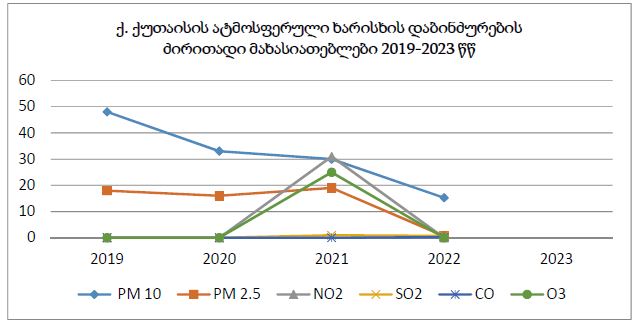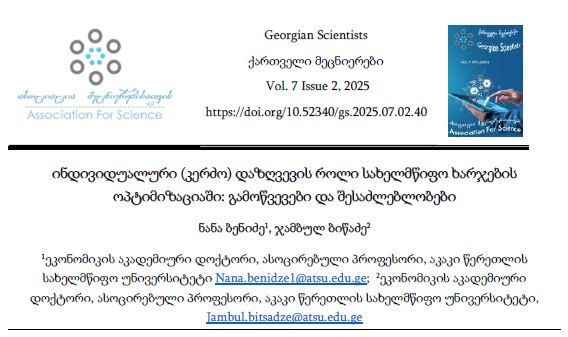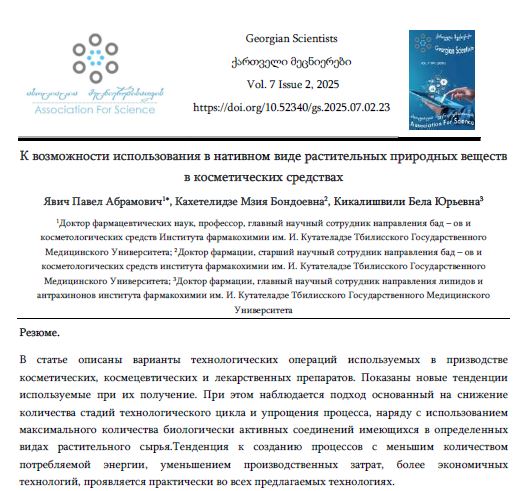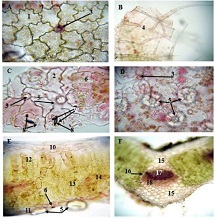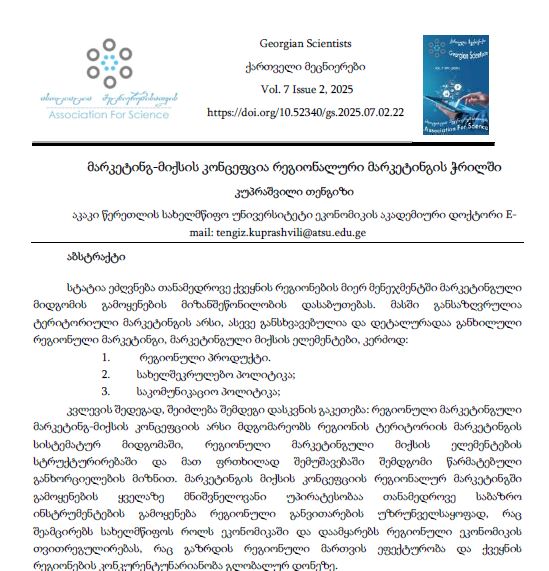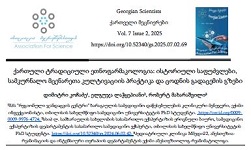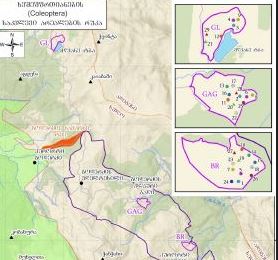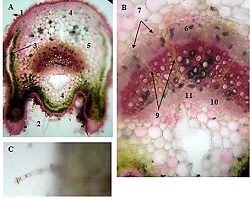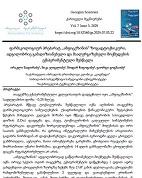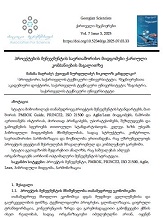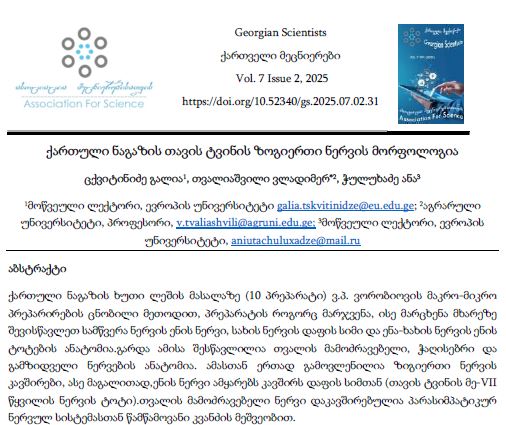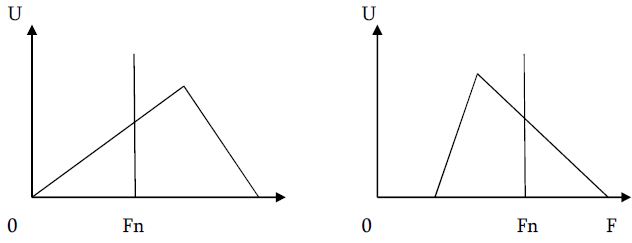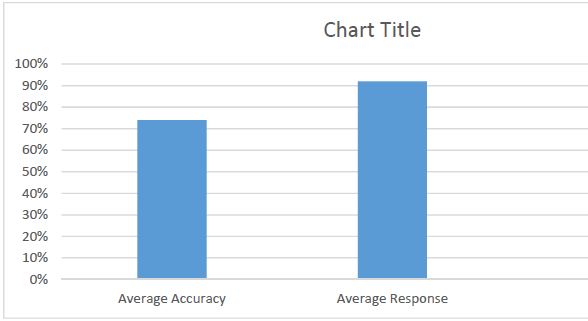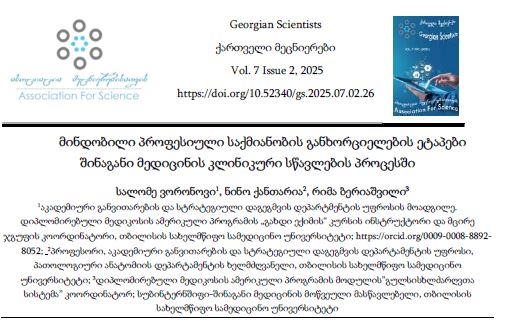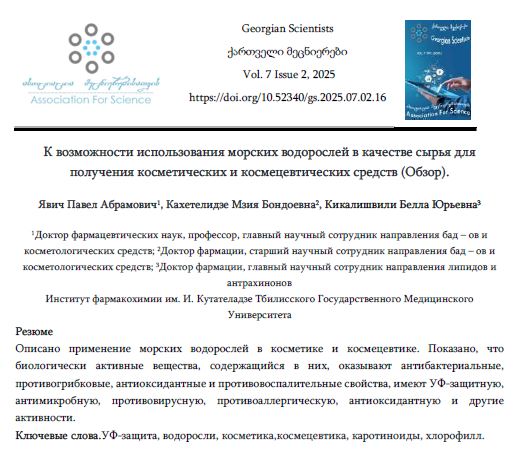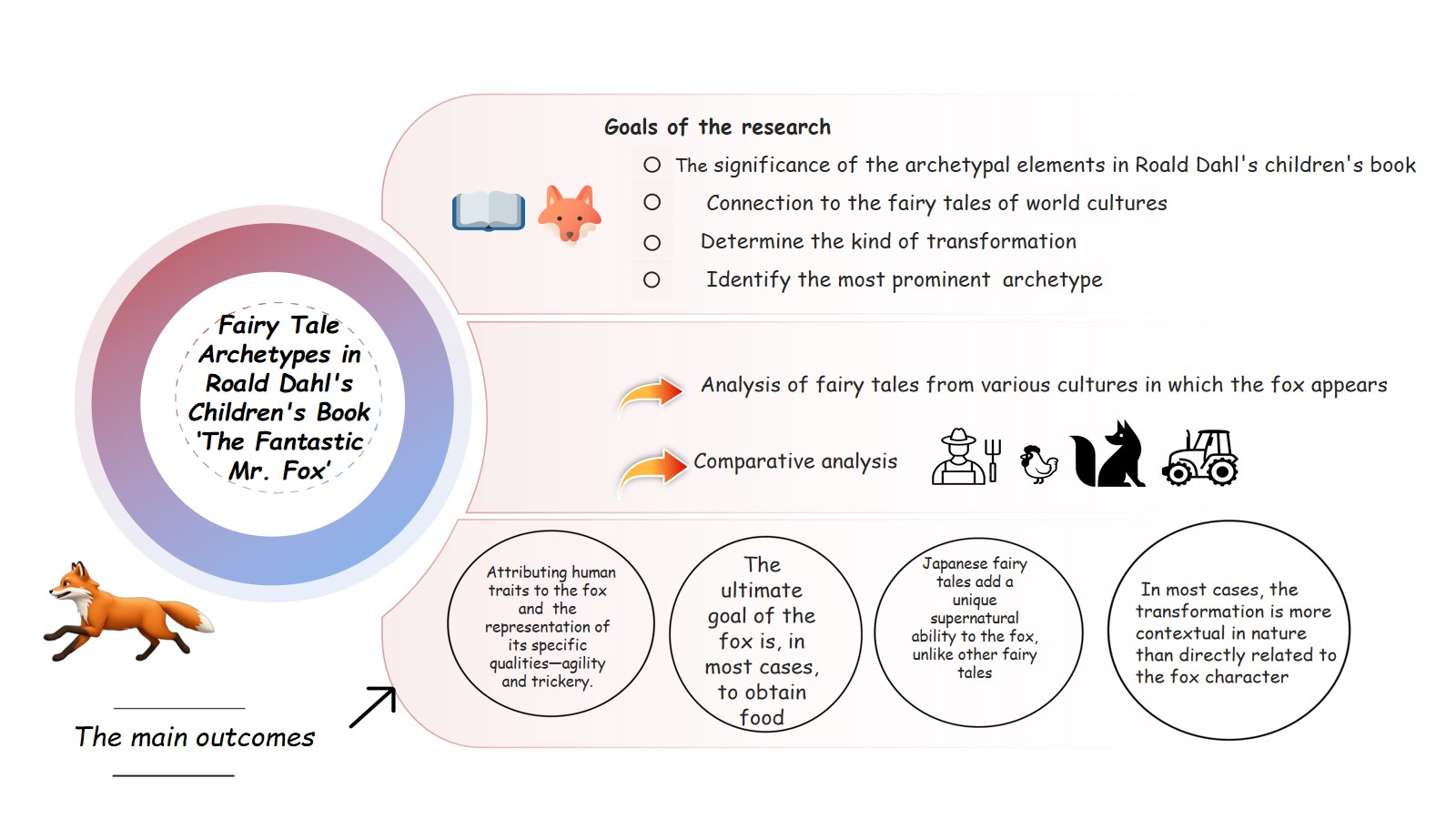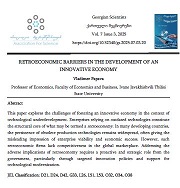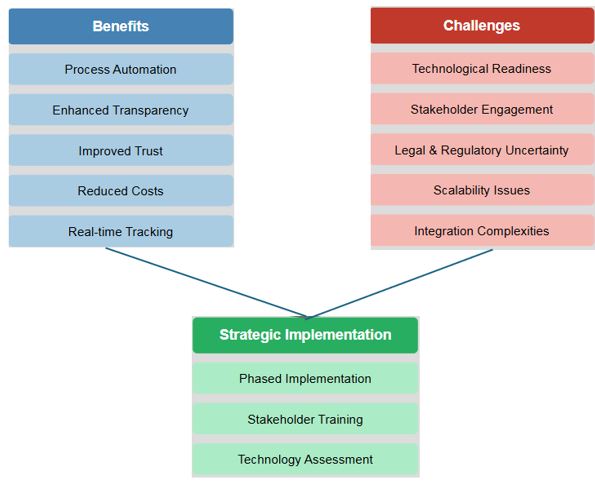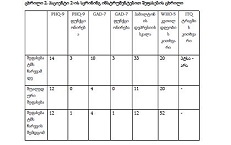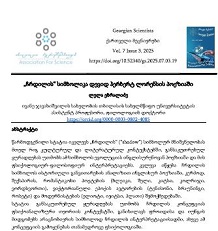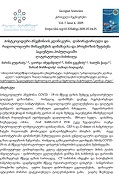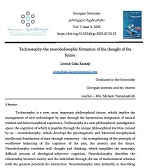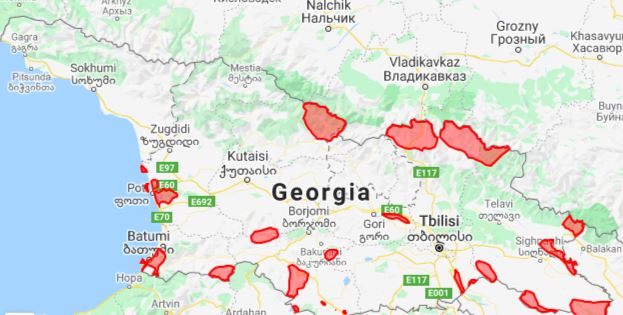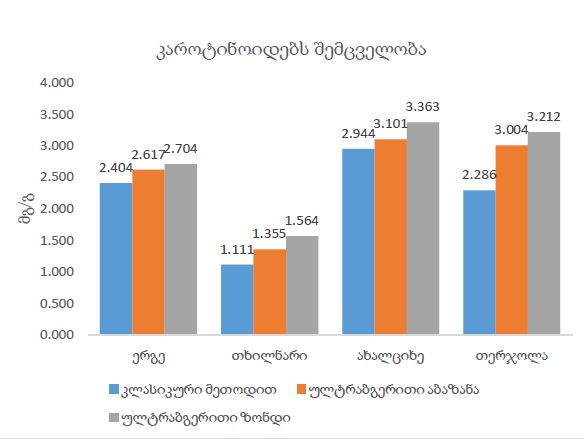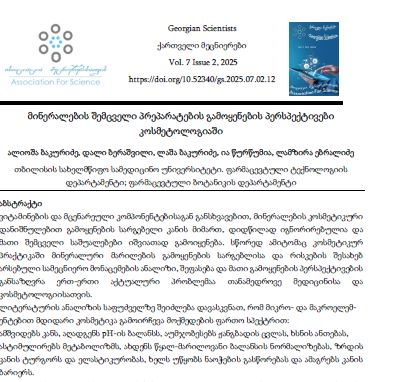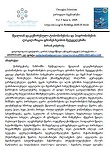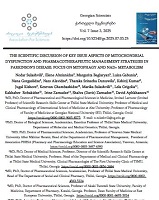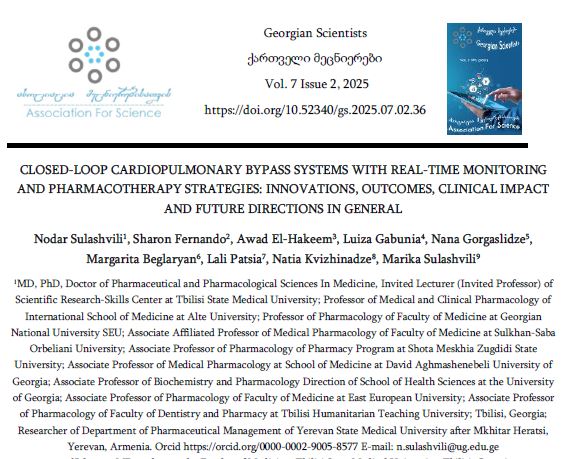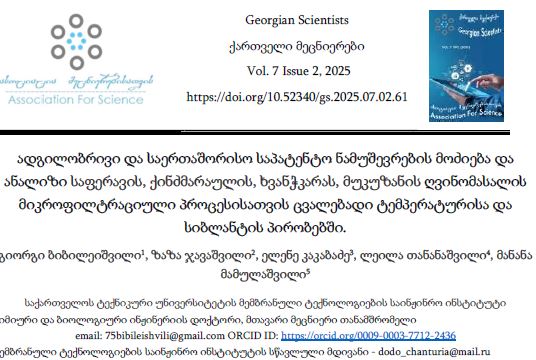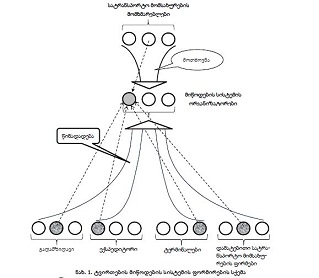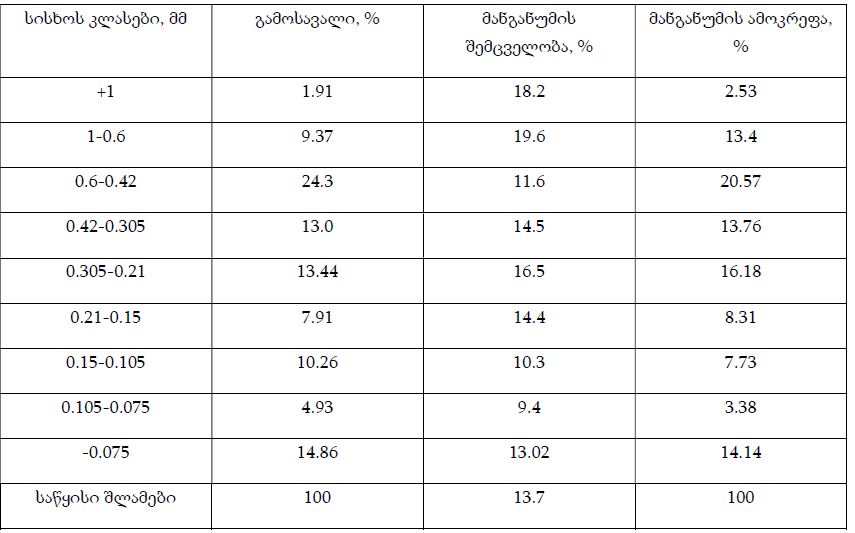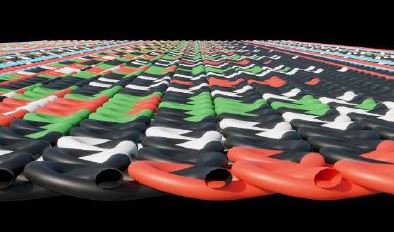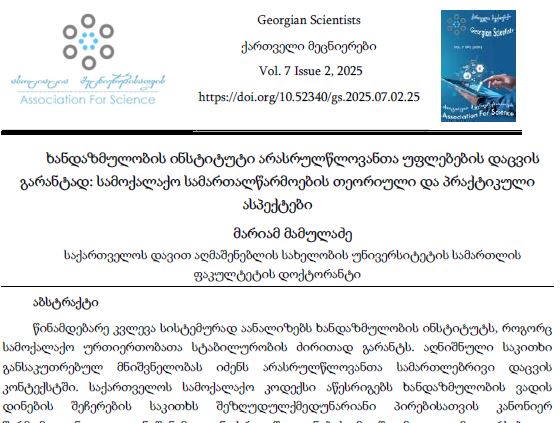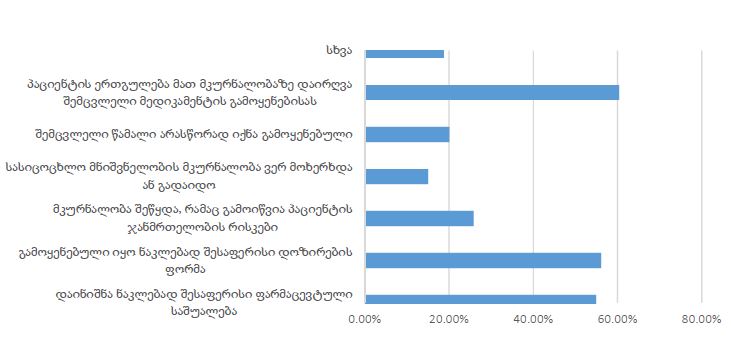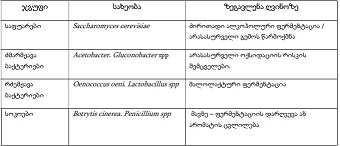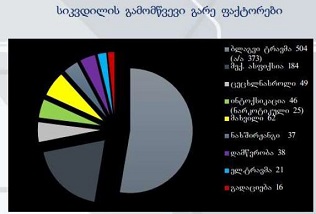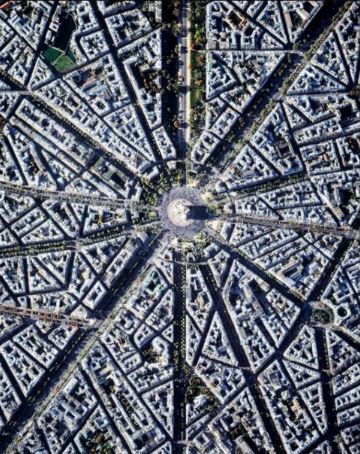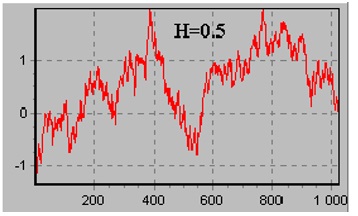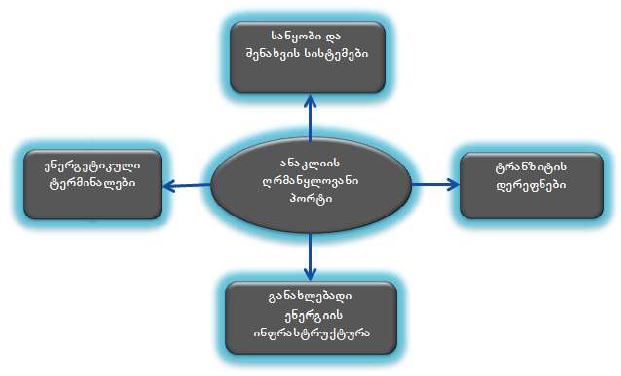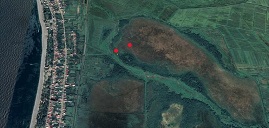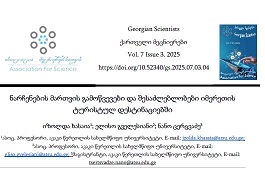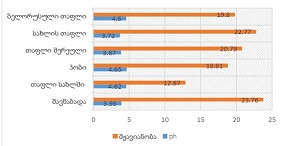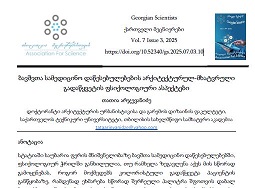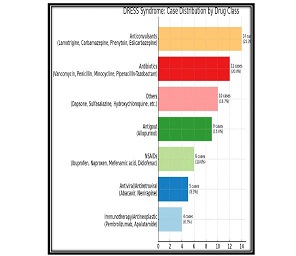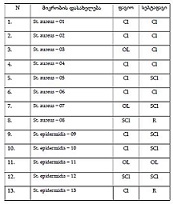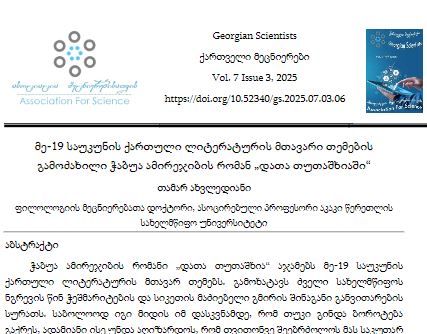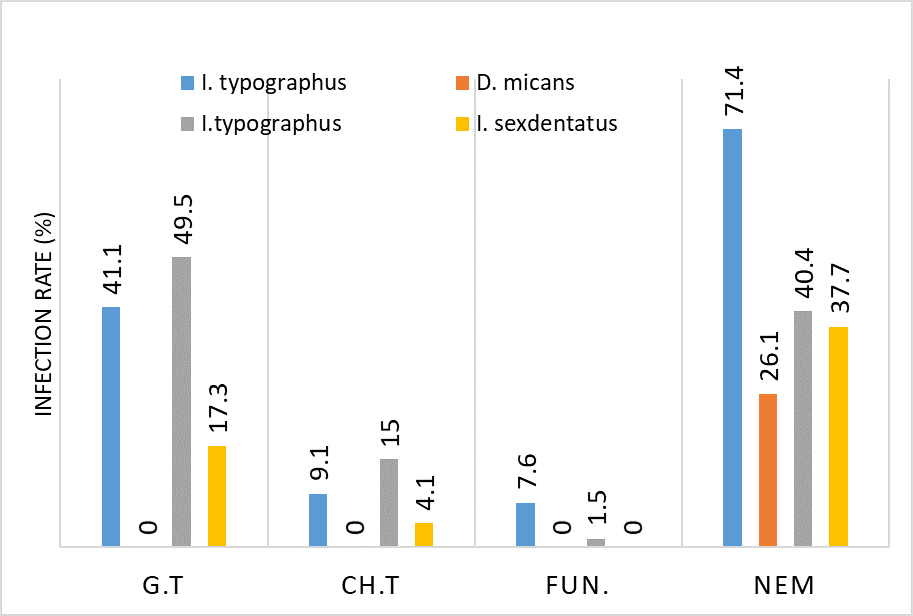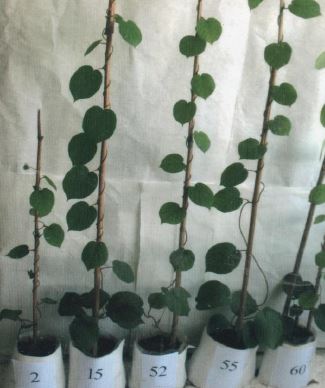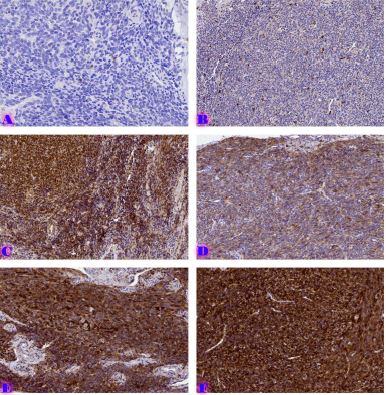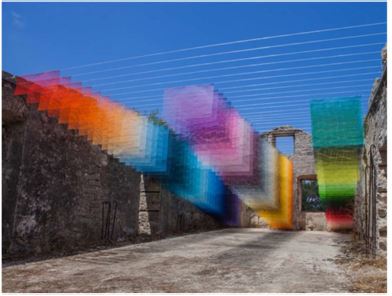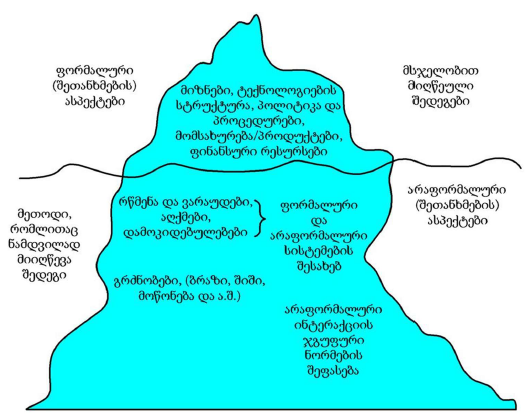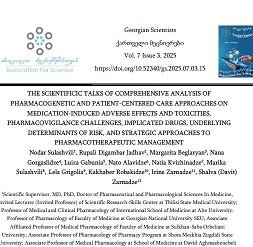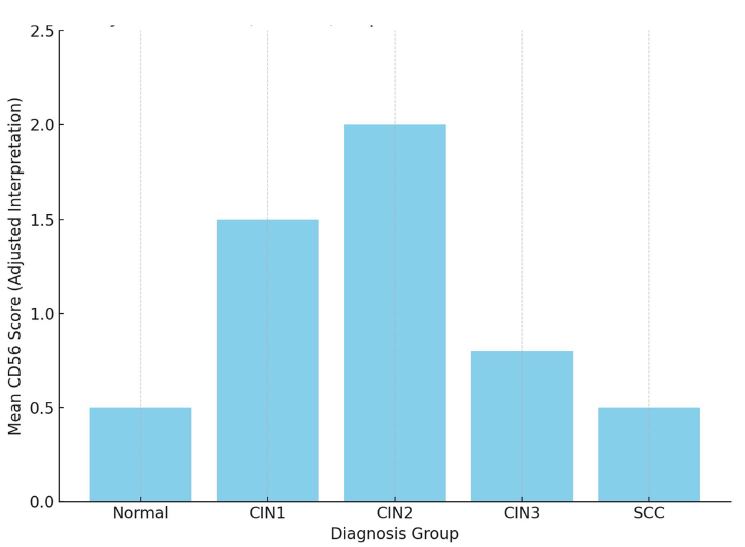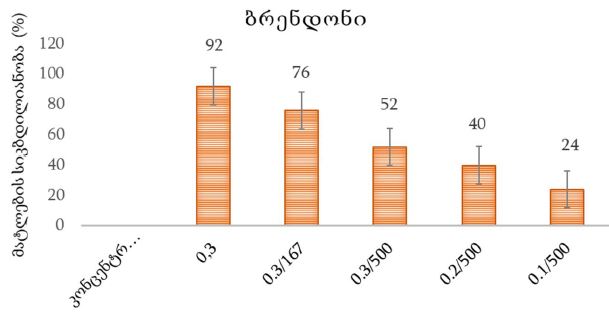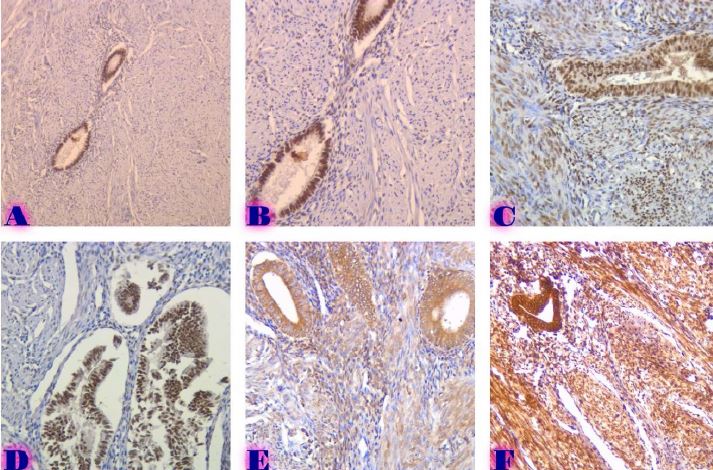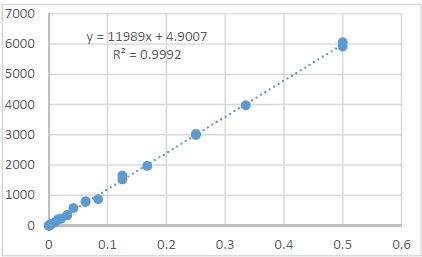Medieval Georgian Glazed Ceramics: Dialogue through Ornamental Motifs
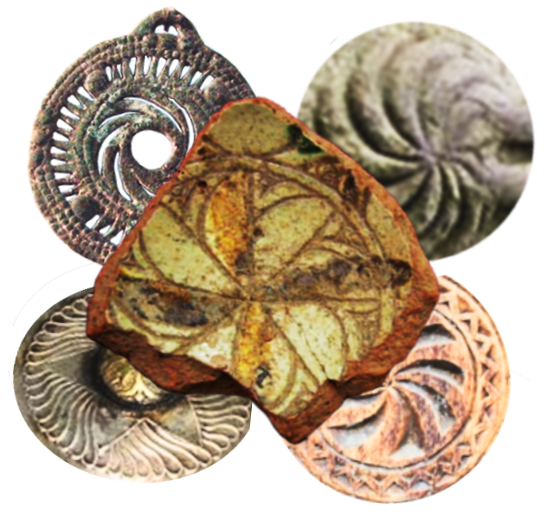
Downloads
The Kutaisi State Historical Museum preserves ornamented fragments of medieval glazed ceramic vessels, which were mainly discovered as a result of archaeological research of the ancient city. Most of the artifacts are decorated with plant, zoomorphic, abstract and other ornamental motifs. The aim of the present study is to discuss the astral-cosmogonic symbol depicted on the ceramic vessels of the Kutaisi collection – the leprechaun and the rotating motifs, through its manifestation from the early era, comparison with the ornamentation of ceramics of neighboring regions, and search for analogues and analysis of parallels on other monuments (monumental and miniature painting, stone reliefs, embossed icons, textiles). The following methods were used to research the issue: visual analysis of artistic style, palette, and composition; historical and cultural analysis to establish connections with other archaeological finds; comparative analysis with samples from collections in Georgia and foreign countries and the search for analogies. The research revealed that the “borjgali” has been an important apotropaic symbol in Georgian culture since ancient times, it was considered an image of the sun and was expressed in various forms and found reflection in different materials. This symbol has become so firmly established in Georgian reality that it has not lost its relevance even at the modern stage. The search for similar foreign materials revealed the similarity of the nature of the local ornament and decorative schemes with the Crimean, Asia Minor and Eastern (Samarkand, Kashan, Nishapur) ceramics. This undoubtedly confirms that Georgian ceramic craftsmanship did not develop in isolation and behind closed doors, but on the contrary, there were cross-cultural influences and connections with ceramic production centers in the East, West, and North. The results of the study contribute to a deeper understanding of Georgia's historical-cultural context and artistic heritage.
Downloads
ბალახაშვილი ვ. (2016). ბორჯომის მხარეთმცოდნეობის მუზეუმი. ონლაინ არქეოლოგია N10. თბილისი: საქართველოს კულტურული მემკვიდრეობის დაცვის სააგენტო.
ბურუსი https://burusi.wordpress.com/2010/03/21/swastika/
თევზაია, მ. (2009). ქართული ორნამენტი. წიგნი II, თბილისი.
კერამიკული ნაკეთობანი შუა საუკუნეების საქართველოში (2013). რედაქტორი: დავით ლორთქიფანიძე ISBN: 9789941157820 სულაკაურის გამომცემლობა.
კულტურული მემკვიდრეობა აფხაზეთში (2015). თბილისი, „მერიდიანი“
მინდორაშვილი დ. (2010). კვეტერის ციხის არქეოლოგიური მასალა, თბილისი
მიწიშვილი მ. (1979) მოჭიქული კერამიკის საწარმო შუა საუკუნეების თბილისში (IX-XIII სს), თბილისი.
ნარიმანიშვილი გ. (2020). არმაზციხის კომპლექსის 2019 წლის არქეოლოგიური კვლევის მოკლე ანგარიში. 2019 წელს ჩატარებული არქეოლოგიური გათხრების მოკლე ანგარიშების კრებული. საქართველოს კულტურული მემკვიდრეობის დაცვის ეროვნული სააგენტო.
ორნამენტი ხეზე. ხელოვნების სახლი არაბული. (2014) https://www.facebook.com/photo/?fbid=644915572223552&set=a.620492157999227
ოშკი (2012). https://gelino.wordpress.com/2012/07/06/%e1%83%9d%e1%83%a8%e1%83%99%e1%83%98-2/
რკონის მონასტერი (2020) https://georgiantravelguide.com/ka/rkonis-monasteri
სადრაძე ვ. (1989). წეროვანი II. ბრინჯაო - რკინის ხანის სამაროვანი, კატალოგი. მცხეთა. არქეოლოგიური კვლევა - ძიების შედეგები. ტ. IX.
სარავა ნ., ქარციძე ნ., უგრეხელიძე ი. (2024). ქუთაისური მოჭიქული კერამიკული ჯამის ორნამენტის შესწავლისათვის. თბილისის სამხატვრო აკადემიის საერთაშორისო სამეცნიერო კონფერენციის მასალები. თბილისი: აკადემია, [ბეჭდვაში].
სვასტიკა..https://ka.wikipedia.org/wiki/%E1%83%A4%E1%83%90%E1%83%98%E1%83%9A%E1%83%98:Qarsvastika2.jpg
ქართული ორნამენტი (2014). https://www.facebook.com/609908925786373/photos/a.609910092452923/609910012452931/?type=3
ქართული ხუროთმოძღვრული ორნამენტი (1954). ტექსტი მასალის შერჩევა და ნახატები რენე შმერლინგისა.
ქარციძე ნ., უგრეხელიძე ი., სარავა ნ., სულაბერიძე დ. (2024). ქუთაისური მოჭიქული კერამიკის ორნამენტული მოტივები. ქუთაისი.
ქარციძე, ნ. (2010). შუა საუკუნეების მოჭიქული კერამიკა ქუთაისიდან. სადოქტორო დისერტაცია. ქუთაისი.
ქვემო ნიჩბისის ეკლესია https://georgiantravelguide.com/ka/kvemo-nichbisis-tsminda-nikolozis-eklesia
ქსოვილის ორნამენტი აჭარიდან (2021). თბილისი https://crafts.ge/assist/images/IFkktTHaQM0COeaCjsy8Eyu4ZVu08U.pdf
შუა საუკუნის ხელოვნება: ვერცხლის თასი საქართველოს ეროვნული მუზეუმი.
ჩე ოხვამე (თეთრი სალოცავი) გალის რაიონის სოფელ თაგილონში, რომელსაც აფხაზებმა სახელი გადაარქვეს და თაგლანი უწოდეს. (2019). https://intermedia.ge/%E1%83%A1%E1%83%A2%E1%83%90%E1%83%A2%E1%83%98%E1%83%90/121653
ჩუბინაშვილი, გ. (2007). არმაზის პიტიახშთა ნეკროპოლში აღმოჩენილი ნივთების მხატვრული დახასიათების ცდა თბილისი: ნეკერი.
ჩხვიმიანი ჯ. (2020). შუა საუკუნეების ქალაქ დმანისის მოსახლეობის სოციალური, ეთნიკური და კონფესიური სტრუქტურის საკითხები (ისტორიულ-არქეოლოგიური გამოკვლევა) სადოქტორო დისერტაცია ილიას სახელმწიფო უნივერსიტეტი თბილისი.
ჭილაშვილი ლ. (1970) ქალაქები ფეოდალურ საქართველოში, II, თბილისი.
ხარშილაძე გ. (2020) ქვემო ნიჩბისის წმინდა ნიკოლოზის ეკლესია
Bowl 9th century or 10th century https://collections.vam.ac.uk/item/O85386/bowl-unknown/
Bowl N1613029553 https://www.britishmuseum.org/collection/image/1613029553
Ceramic Bowl 8th - 9th Century https://www.ebay.com.my/itm/133645439883
Concordia Sagittaria - Bowl, https://www.pinterest.co.kr/pin/467600373814617781/
Coupe à décor rayonnant 1215 Lieu de provenance : Kashan (Monde iranien - Caucase->Iran) https://collections.louvre.fr/ark:/53355/cl010321170
Islamic Art. Bowl-10th century https://www.metmuseum.org/art/collection/search/449549?pos=2
Kartsidze N. G., Ugrekhelidze I. I., Sarava N. D., Sulaberidze D. N. (2024). Glazed ceramic vessel with the image of a bird from the Kutaisi Historical Museum. Global science: prospects and innovations. Proceedings of the 7th International scientific and practical conference. Liverpool, United Kingdom.: Cognum Publishing House, pp. 414-420. URL: https://sci-conf.com.ua/vii-mizhnaro dna-naukovo-praktichna-konferentsiya-global-science-prospects-and-innovations-1-3-03-2024-liverpul-velikobritaniya-arhiv/
Kartsidze N. G., Ugrekhelidze I. I., Sarava N. D., Sulaberidze D. N. (2024). For the Decoration of Kutaisi Glazed Ceramics // Modern research in science and education. Proceedings of the 7th International scientific and practical conference. Chicago, USA: BoScience Publishe,. pp. 342-349. URL: https://sci-conf.com.ua/vii-mizhnarodna-naukovo-prak tichna-konferentsiya-mo dern-research-in-scien ce-and-education-7-9-03-2024-chikago-ssha-arhiv/.
Kartsidze, N., Lanchava, O., Ugrekhelidze, I., Sulaberidze, D., Sarava, N. (2023). Artifacts Reflecting the Traditions of Producing Glazed Ceramics from the Kutaisi Historical Museum. Proceedings of Georgian National Academy of Sciences, series of History, Archaeology, Ethnology and Art History, no. 2, pp. 128-138. http://macne.org.ge /index.php/macne/article/view/113
Lane, Arthur. Early Islamic Pottery. London: Faber and Faber, 1947. 52p., ill. Page 18, plate 21A.
Niszapur Miska ceramiczna https://www.catawiki.com/pl/l/81414253-niszapur-miska-ceramiczna
Porter Y. (2012). Le prince, l'artiste et l'alchimiste : La céramique dans le monde iranien Xe-XVIIIe siècle. Paris, Hermann, 2011. Bulletin critique des Annales islamologiques N27.
Sedikova. L. (2011). Glazed Ware from the Mid Tirteenth-Century Destruction Layer of Chersonesos. Medieval and Post-Medieval Ceramics in the Eastern Mediterranean - Fact and Fiction. Proceedings of the First International Conferenceon Byzantine and Ottoman Archaeology. Amsterdam.
Ugrekhelidze I.I., Kartsidze N.G., Sarava N.D., Sulaberidze D.N. (2024). Glazed Ceramics with Epigraphical Ornament from Kutaisi Historical Museum. Золотоордынское обозрение [in print].
Waksman, S. Y. (2014). Long-term pottery production and chemical reference groups: examples from Medieval Western Turkey. In: Meyza, H. (ed.), Late Hellenistic to Mediaeval Fine wares of the Aegean Coast of Anatolia. Their production, imitation and use. Warsaw: Neriton, p. 107—125.
Wilkinson, Charles K. Nishapur: Pottery of the Early Islamic Period. New York: The Metropolitan Museum of Art, 1973. no. 53, ch. 4, pp. 144, 156, ill. p. 156 (b/w).
Yangaki A. (2017). Immured vessels in the church of Panagia Eleousa, Kitharida, Crete. Поливная керамика Средиземноморья и Причерноморья X—XVIII вв. 2.
Грузия. Орнамент https://www.pinterest.com/pin/438115870006571348/
Масловский А. Н. (2017). Восточнокрымский поливной импорт в золотоордынском Азаке. Вопросы хронологии. Поливная керамика Средиземноморья и Причерноморья X—XVIII вв. 2.
Особенности посещения монастыря Ркони tourist guide and agency Viva-Georgia https://v-georgia.com/showplaces/osobennosti-poseshheniya-monastyrya-rkoni/
Тесленко И. Б. (2017). Комплекс керамики из раскопок усадьбы золотоордынского периода в Алуште // Поливная керамика Средиземноморья и Причерноморья X—XVIII вв. 2.
Тесленко И. Б. (2021). Керамика Крыма XV века. — Киев: ИА НАН Украины, 308 c.
Хуторской А.В. (2023). Есть ли язычество в Грузии? https://dzen.ru/a/ZIJF7mCU_1XoQBha
Copyright (c) 2025 Georgian Scientists

This work is licensed under a Creative Commons Attribution-NonCommercial-NoDerivatives 4.0 International License.








